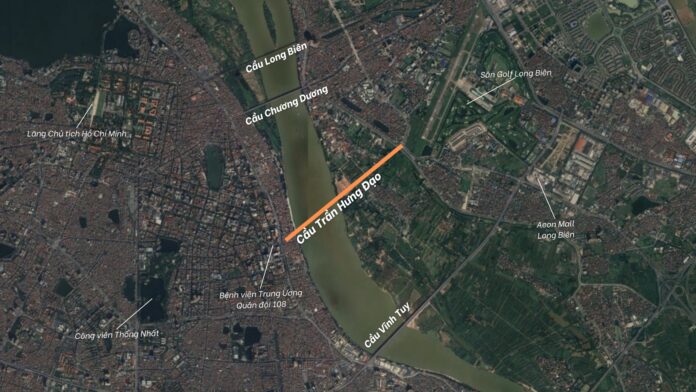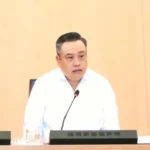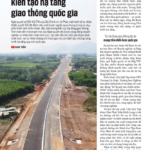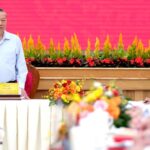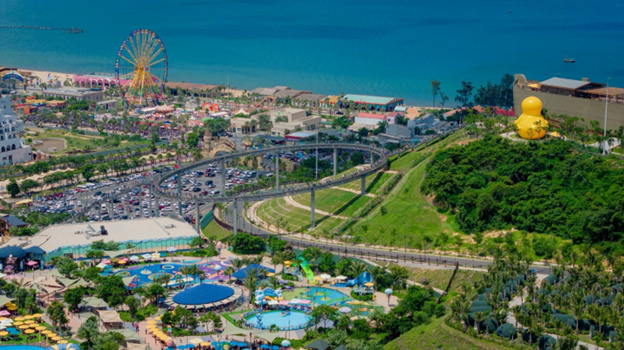
The Hanoi People’s Committee Office has issued a notification regarding the directions provided by Chairman of the Hanoi People’s Committee, Tran Sy Thanh, during a meeting on the progress of three key infrastructure projects: the construction of Tran Hung Dao Bridge, Ngoc Hoi Bridge, and their respective approach roads.
Regarding the Tran Hung Dao Bridge project, the Chairman has instructed the Long Bien District People’s Committee to collaborate with the Department of Finance to propose a budget for land retrieval and compensation for structures on the land. Simultaneously, they are to coordinate with the Departments of Planning and Architecture, and Agriculture and Rural Development to implement land retrieval procedures and hand over the sites to the respective units.
The Hanoi leader has assigned the Department of Construction to collaborate with the Project Management Unit of Traffic Projects, and the Departments of Planning and Architecture, and Agriculture and Rural Development, to consider the proposal of the Long Bien District People’s Committee. The aim is to expand the scope and size of the Tran Hung Dao Bridge intersection with Nguyen Son Street to ensure smooth traffic flow and prevent local congestion.
In terms of the project’s timeline, the Hanoi Transport Project Management Unit is responsible for reviewing and updating the implementation plan. The Department of Construction will then report to the Hanoi People’s Committee for approval, with the principle of aligning the plan with reality while adhering to the directive to commence the project on the occasion of the 80th anniversary of the August Revolution (August 19) and National Day (September 2).
Additionally, the Hanoi leader has requested the Department of Construction to finalize the project appraisal and submit it to the Hanoi People’s Committee before June 13, 2025.
The Tran Hung Dao Bridge project is estimated to cost approximately VND 15,967 billion to construct. The project is scheduled to be implemented from 2025 to 2027.
The bridge will start from the intersection of Tran Hung Dao and Tran Thanh Tong streets in Hoan Kiem District and end at the intersection with National Highway 5A and Nguyen Van Linh Street in Long Bien District.
In Hoan Kiem District, the bridge will pass through a significant portion of Van Kiep Street and be located near the Central Military Hospital 108. In Long Bien District, the bridge will be adjacent to a residential area near the Red River. The road connecting Tran Hung Dao Bridge to Nguyen Van Linh Street will be built between Lam Du Lake and Gia Lam Airport.
The entire route is designed to be approximately 5.6 km long, featuring six lanes for motor vehicles, two lanes for bicycles, and two lanes for pedestrians. The design speed is set at 80 km/h.
The branch bridges within the intersection will vary in width from 7 to 9 meters. Four complete intersections will be constructed along the route: one in Hoan Kiem District (intersecting with the Red River Dyke and Tran Hung Dao Street), one with Co Linh Street, one with Nguyen Son Street, and one with Nguyen Van Linh Street in Long Bien District.
The project comprises two components. The first component involves compensation, support, and resettlement in Hoan Kiem, Hai Ba Trung, and Long Bien districts. The second component includes the construction of Tran Hung Dao Bridge and its approach roads, as well as the construction of a road from Co Linh intersection to the end of the project at Vu Duc Thuan Street in Gia Thuy Ward, Long Bien District.
Once completed, Tran Hung Dao Bridge will play a crucial role in connecting central Hanoi with districts north of the Red River, such as Long Bien and Gia Lam. This new transportation link will not only reduce the burden on existing bridges like Chuong Duong and Long Bien but also serve as a modern architectural and transportation landmark, contributing to the transformation of the capital city’s urban landscape.
Duong Duong
The Hanoi Chairman Finalizes the Construction Timeline for the Tran Hung Dao and Ngoc Hoi Bridges
“Hanoi People’s Committee Chairman Tran Sy Thanh presided over a meeting, setting specific deadlines for the construction commencement of the Tran Hung Dao and Ngoc Hoi bridges. The swift progression of these infrastructure projects is a testament to the city’s dedication to enhancing connectivity and facilitating seamless transportation for its residents and visitors alike.”
The Scenic Be River Road: Connecting Binh Duong with Three Eastern Provinces
The Be River route, spanning a length of approximately 45 kilometers through Phu Giao and Bac Tan Uyen districts in Binh Duong province, forms a vital link between three provinces: Binh Duong, Binh Phuoc, and Dong Nai. This engineering marvel not only facilitates seamless trade and transportation of goods between these locales but also boosts their tourism potential, showcasing the regions’ natural beauty and scenic attractions.
The Road to a Greener Hanoi: A Bold Vision to Reduce Traffic in the City’s Heart
“Hanoi’s People’s Committee Chairman Tran Sy Thanh emphasized the city’s determination to foster urban development and enhance its cleanliness and aesthetic appeal. To achieve this vision, Hanoi will persist in its plan to reduce the number of motorbikes in four key inner districts, marking a significant step towards a more modern and sophisticated urban landscape.”
Opening the Doors to Private Sector-Led Transportation Infrastructure Development
“Resolution 68-NQ/TW of the Politburo on Private Sector Development (Resolution 68) marked a significant turning point in the thinking around private sector growth, especially within the transport infrastructure sector. The Resolution’s strong emphasis on innovation was well-received by the private business community, setting the stage for a new era of development where the private sector not only participates but also pioneers the creation of large-scale national infrastructure projects.”
Could an International Airport in Vietnam be Shutting Down for 6 Months?
“This state-of-the-art airport will serve as a gateway to boosting tourism and high-tech agricultural exports in Vietnam’s largest province. With its strategic location and modern infrastructure, the airport will unlock unprecedented opportunities for the region, fostering economic growth and connecting local businesses to the world.”

